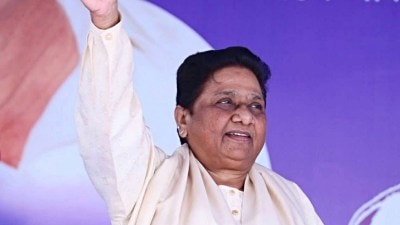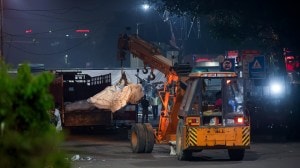Still in the stone age
Have you tried to go for a sculpture exhibition lately? Ask a gallery owner when a Mumbai-based sculptor had a showing last and chances are ...

Have you tried to go for a sculpture exhibition lately? Ask a gallery owner when a Mumbai-based sculptor had a showing last and chances are that you would get a blank look. While prices of art have been soaring, its second cousin — sculpture — finds itself under threat of near extinction. So, how bad is the scenario?
Pretty grim. Unlike several places in Rajasthan, Madhya Pradesh, Gujarat and Tamil Nadu — that’ve been churning out many sculptors year after year — this art is at its lowest ebb in the city. After a Pilu Pochkhanawala, B Vitthal and Adi Deviarwala, Mumbai has not seen a local sculptor of repute. And even though a handful of young sculptors are trying to find a niche for themselves, the going is as hard as a chisel on rough stone.
Impediments to this art form, as far as Mumbai is concerned, begin from scratch — unavailability of the basic requirement, the medium. Marble is freely available in Rajasthan and Tamil Nadu has granite and bronze in plenty. But Mumbai’s geographic location works against this art form. The sculptors choice: terracotta, which is easily available but delicate, or carting-in tougher materials from places as far as Baroda and Mahabalipuram. "All this is a highly costly affair," says Uttam Pacharne, a local sculptor and student of Pilu Pochkhanawala. But if they use softer materials which don’t last long, then they have no chances of recovering costs.
This has given rise to a rather peculiar problem — Mumbai’s sculptors are facing stiff competition from those outside. Says Pacharne, "The materials to work on are readily available, so it’s easy for them to bring their ready works to the city for sale." C Dakshinamurthy, a Chennai-based sculptor, proves the point. He comes periodically to the city to exhibit his sculptures. Most of his work is in granite, pink and black, and bronze. "For a Mumbai sculptor, the closest place to get material is the outskirts of Pune," he sympathises.
The other crippling factor is the lack of space and expensive real estate which make it difficult to have one’s own foundry or a studio. Also tiny studios do not encourage room to manoeuvre. "Mumbai is such a compact place that even if one has a place to work, people complain about the noise," says Pacharne.
But the major deterrent to the local sculptor is the absence of a Lalit Kala Akademi — a body responsible for providing, both painters and sculptors, a platform for their art besides basic facilities . Though a Mumbai chapter has been planned near the Aarey Milk Colony, no progress has been made so far.
The tragedy is that it has not really been missed. Caught in a vicious circle where there is no academy because there is no interest — and there is no interest because there is no Akademi to encourage young sculptors — patronage is limited to private galleries and personal preferences. People like Pheroza Godrej, director, Cymroza Art Gallery and a collector of Pochkhanawala, Vitthal and other sculptors, try and encourage this genre. Cymroza arranges at least two sculpture exhibitions a year.
But that is just a drop in the ocean. For the others, the knights in shining armour exist in the form of Bollywood and Ganesh Chaturthi. Says Bhagwan Rampure, winner of the Maharashtra state award for sculpting (1997), "Most sculptors take to making Ganesh idols that are in great demand in the city. A few work as set designers in Film City." Sculptors obviously cannot sculpt their own destiny.





- 01
- 02
- 03
- 04
- 05


























